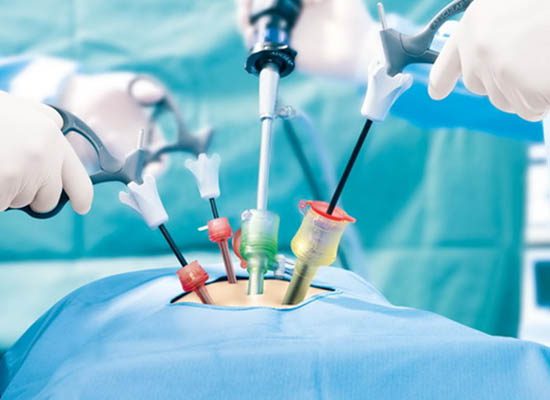Laparoscopy

More commonly known as key-hole surgery or Minimally invasive surgery, this method allows the surgeon to access the abdomen of the patient without the use of large incisions, hence reducing the pain and post operative morbidity of the patient.
A small (1 cm) incision is placed on the navel of the patient and the Laparoscope (camera) is introduced into the abdomen through this incision (port) and the image is transmitted onto a TV screen where the surgeon can see the structures with more clarity and definition than is available in a conventional open surgery. Additional ports are placed as per the requirement of the surgery being done but all vary from 0.5 to 1.0 cms in length and hence they are very small. These additional ports are used to inset instruments required for the surgery such as scissors, cautery etc.
The advantages of Laparoscopy
Accurate Diagnosis
Accurate diagnosis of various causes of infertility, including endometriosis, pelvic adhesions, and ovarian cysts. This enables targeted treatment to be provided, improving the chances of a successful pregnancy.
Multiple Procedures
Used to perform multiple procedures at the same time, such as removing ovarian cysts or uterine fibroids, which can contribute to infertility.
Increased Success Rates
This treatment can improve the success rates of other infertility treatments, such as IVF, by addressing underlying conditions that may be affecting fertility.
Shorter Hospital Stay
Because laparoscopy is a minimally invasive procedure, patients can typically return home the same day or the day after the procedure.

